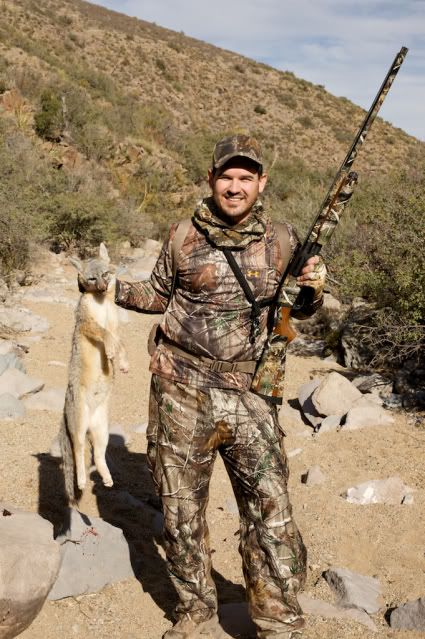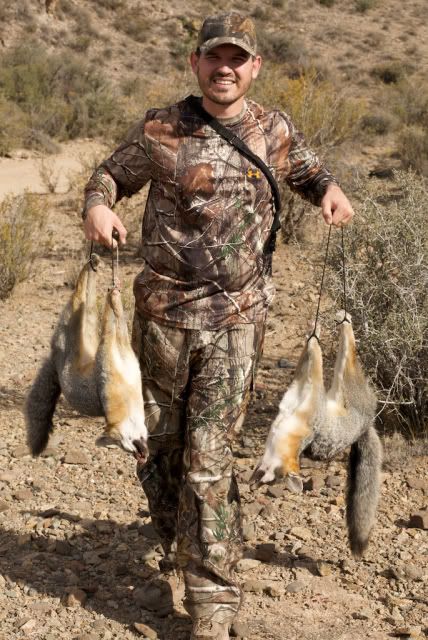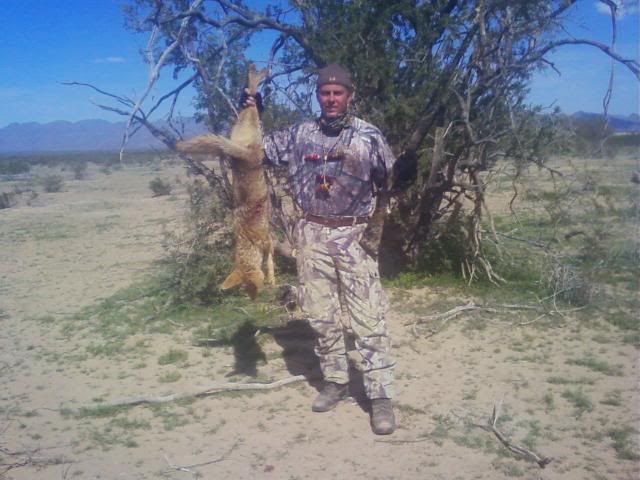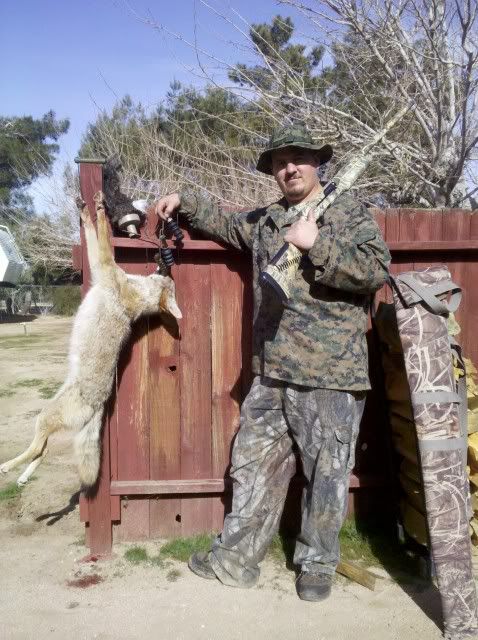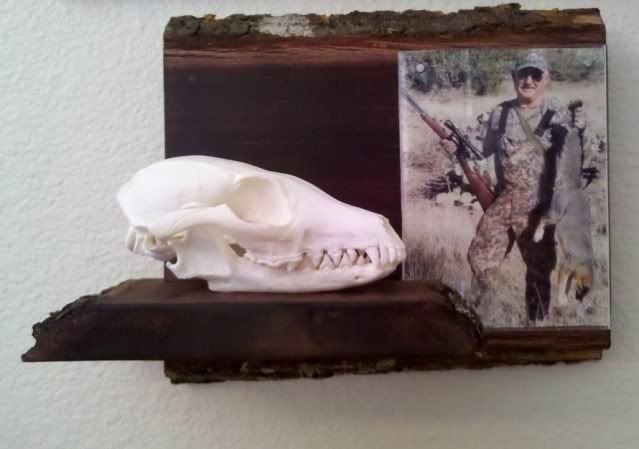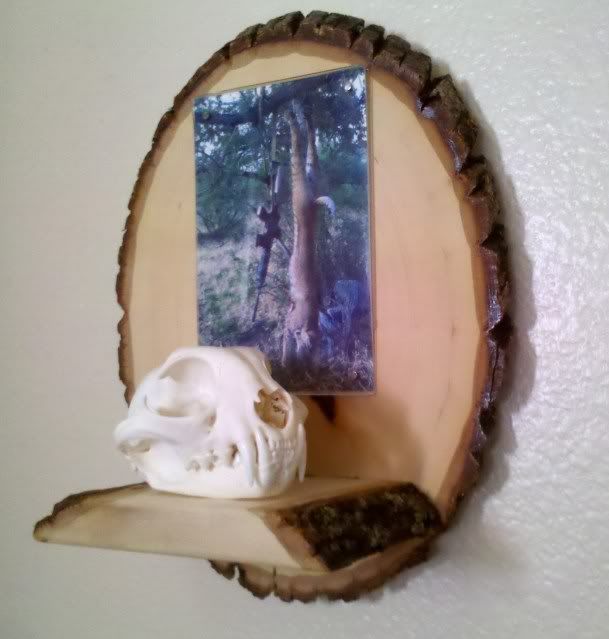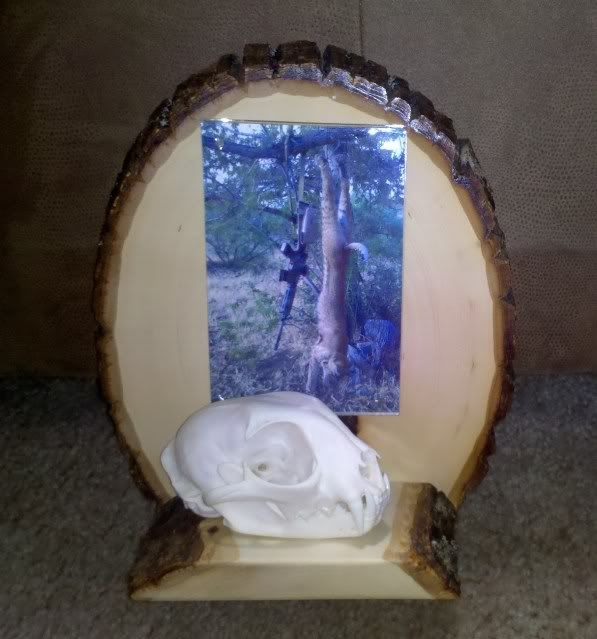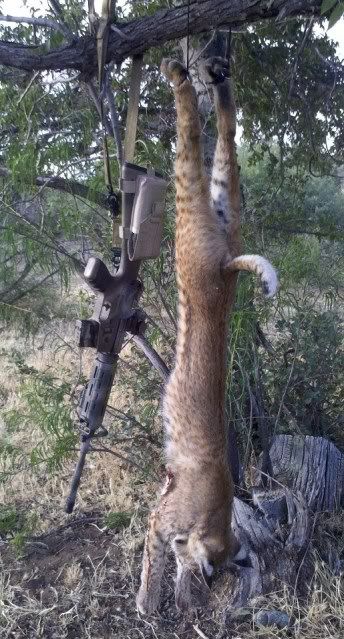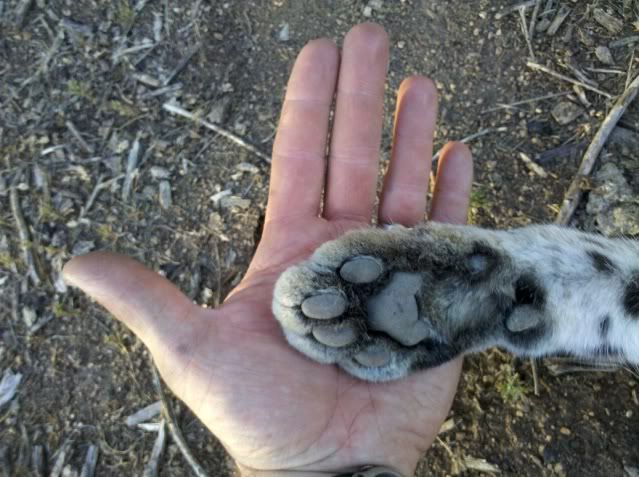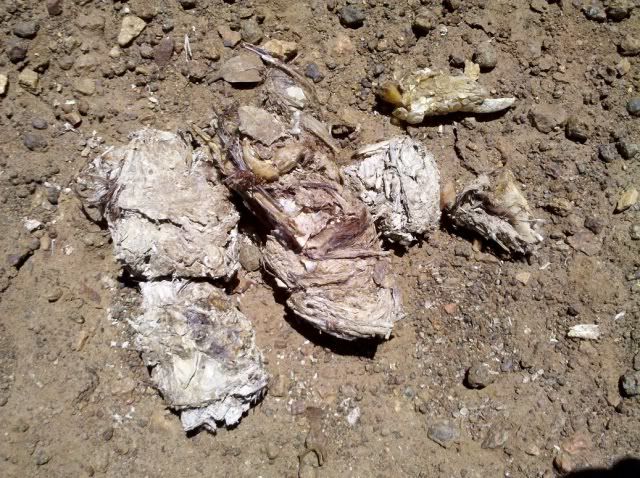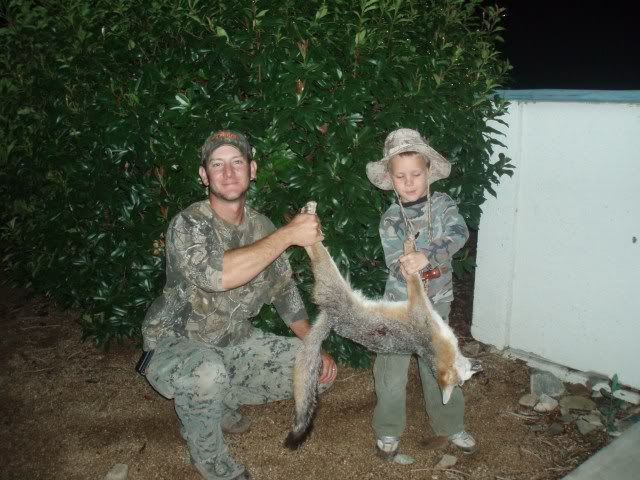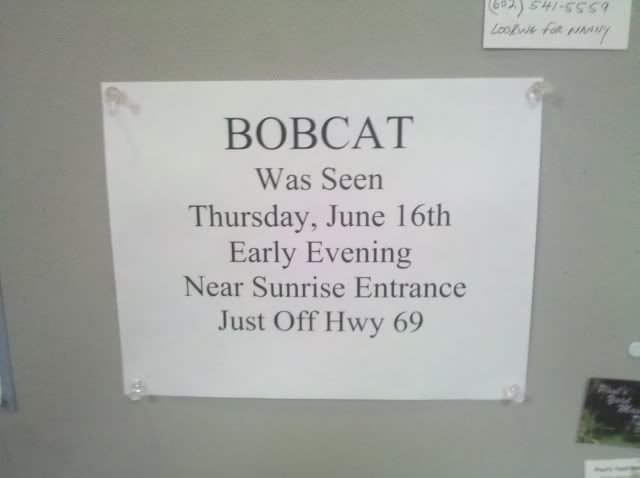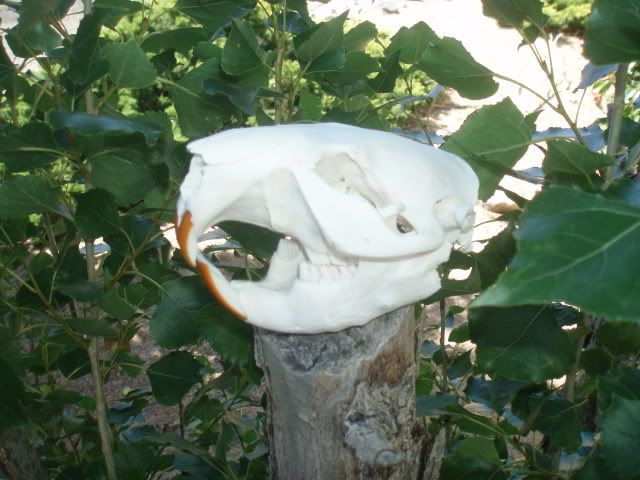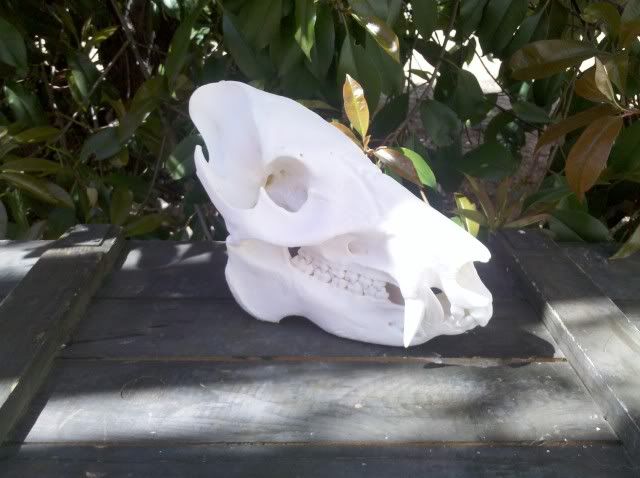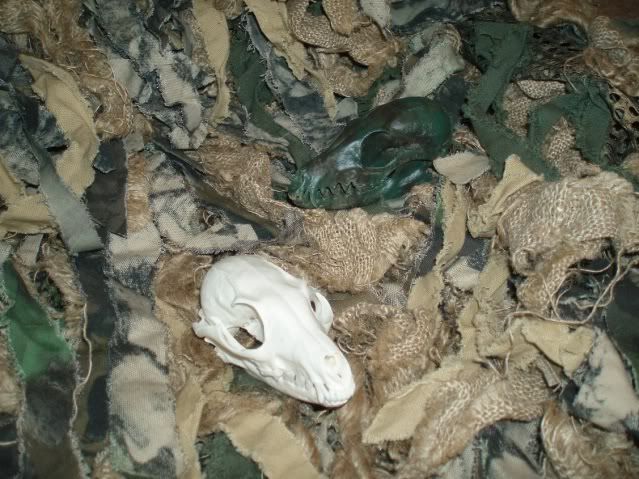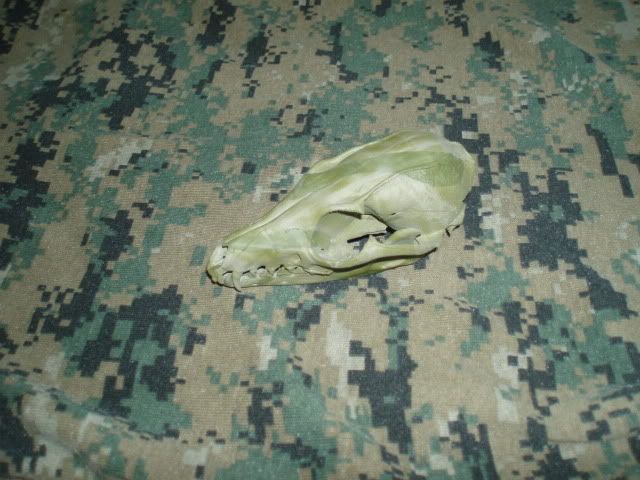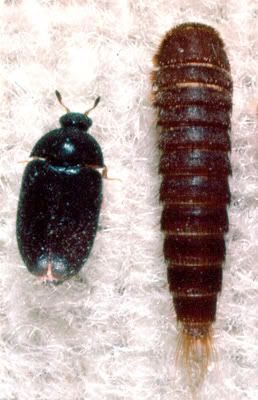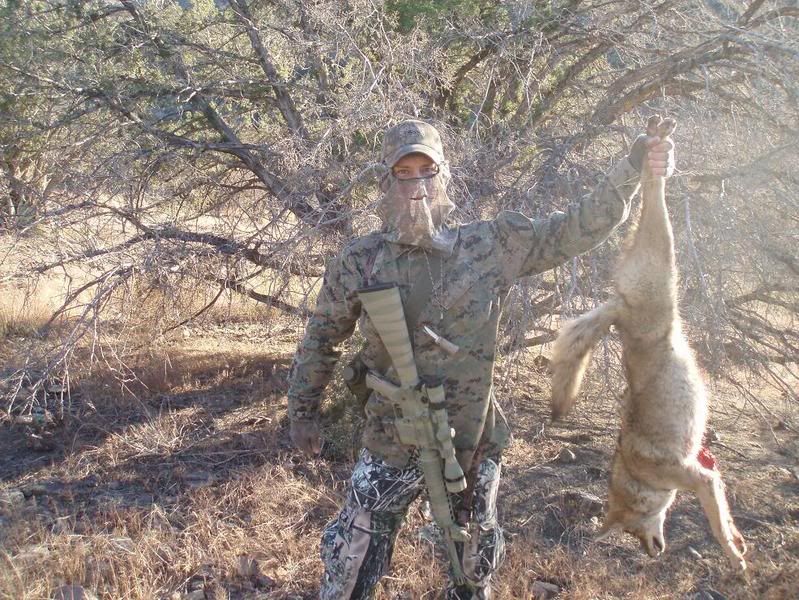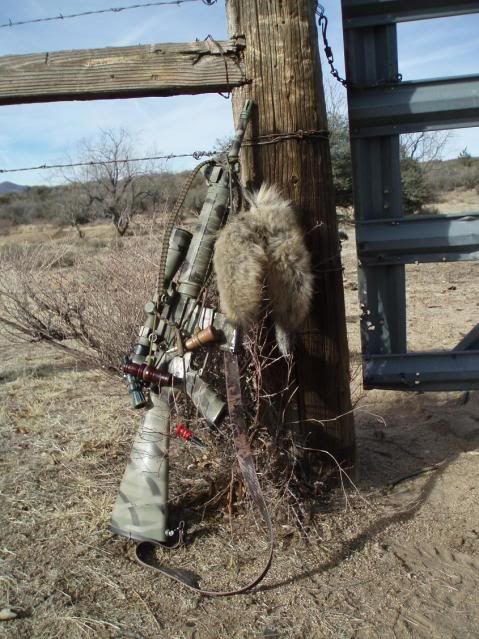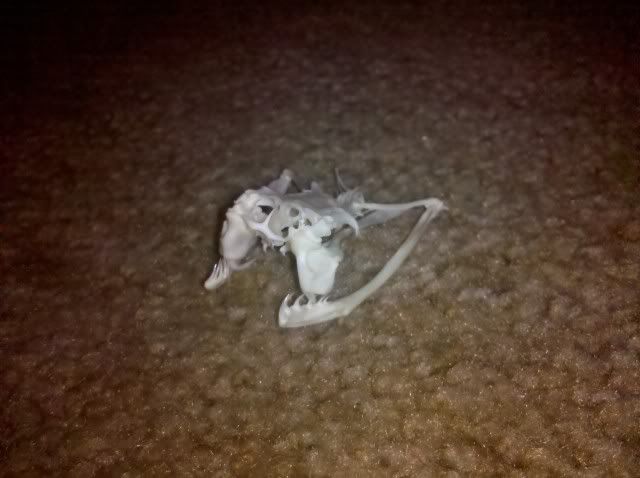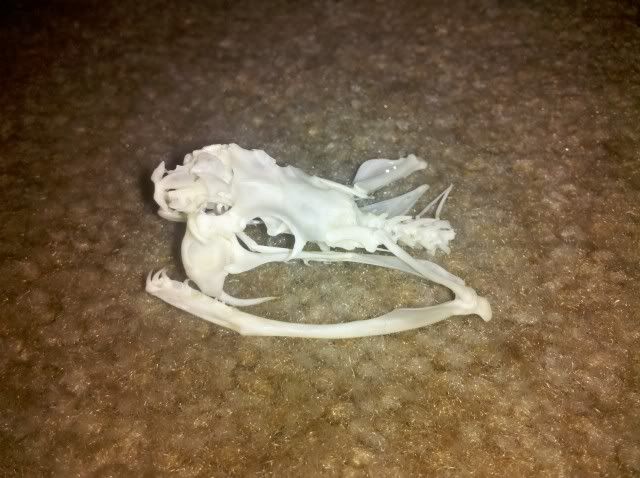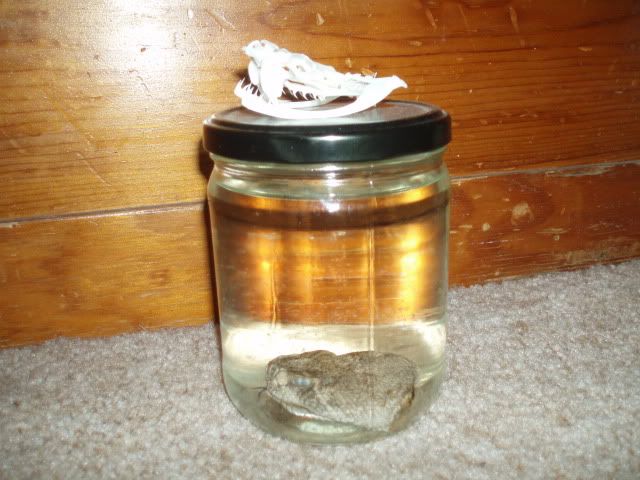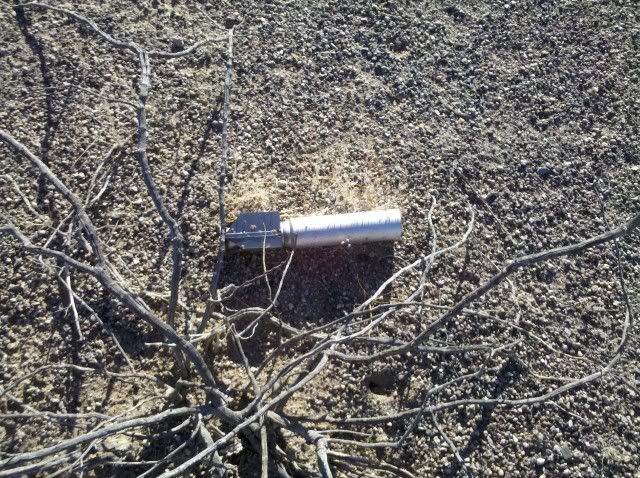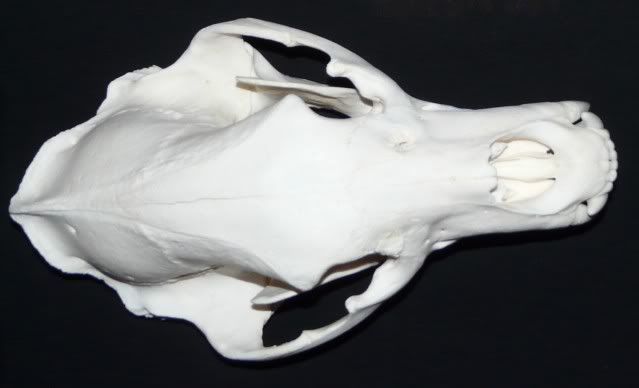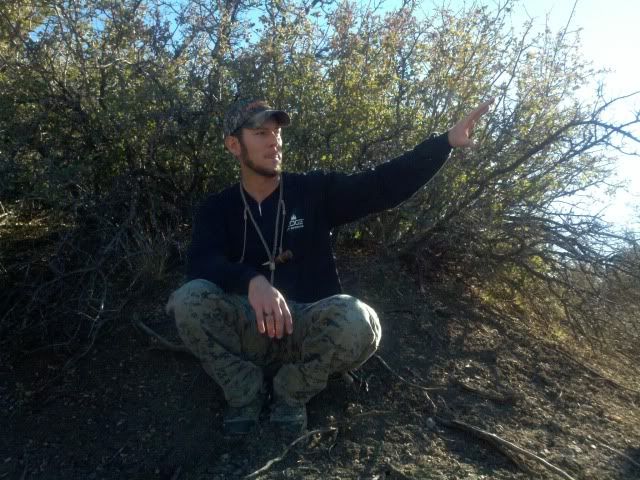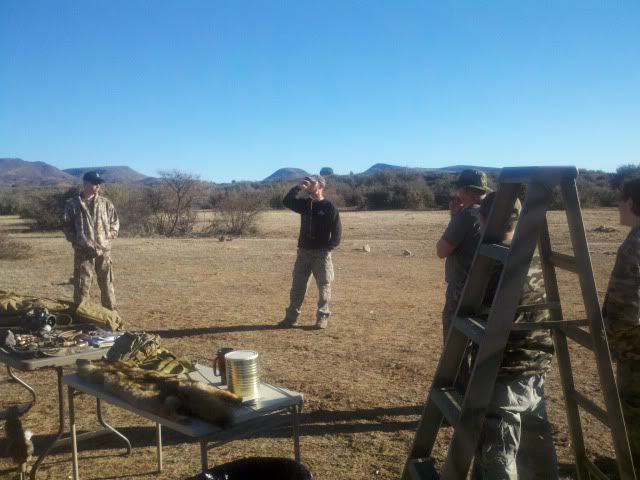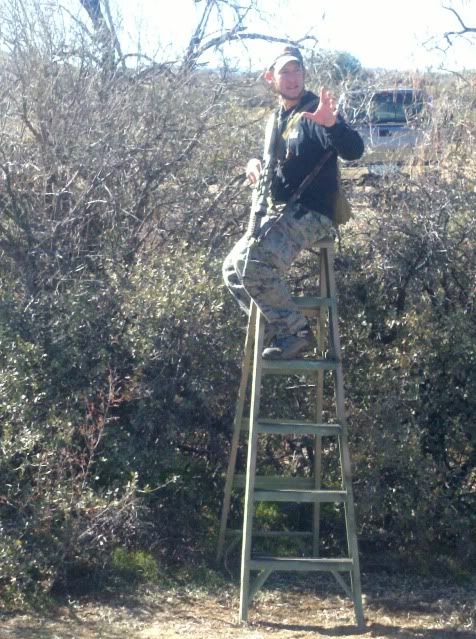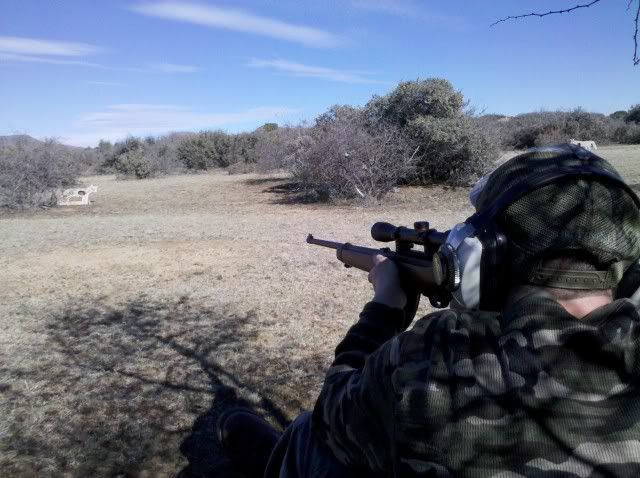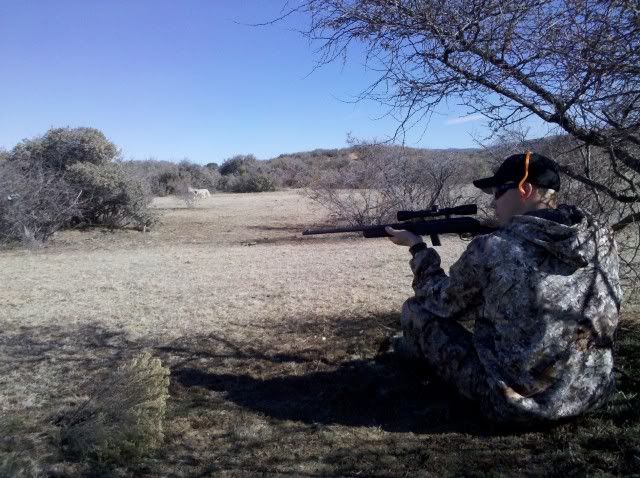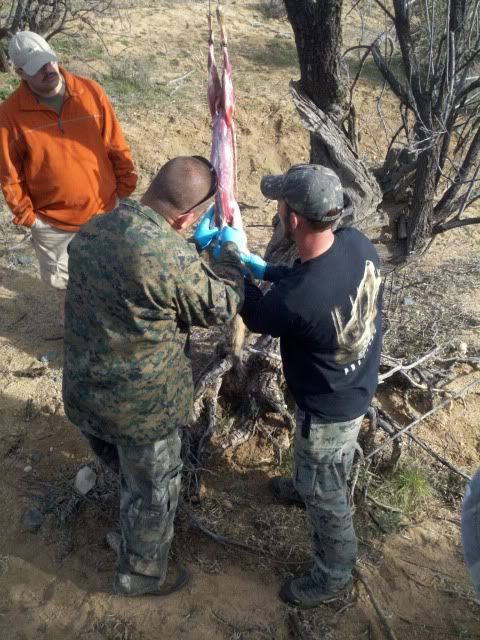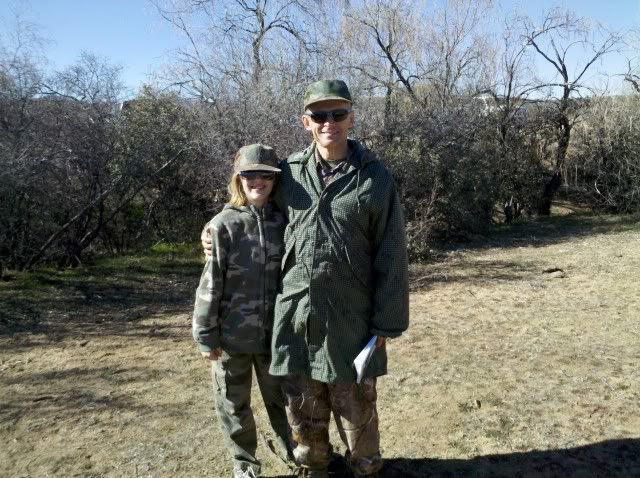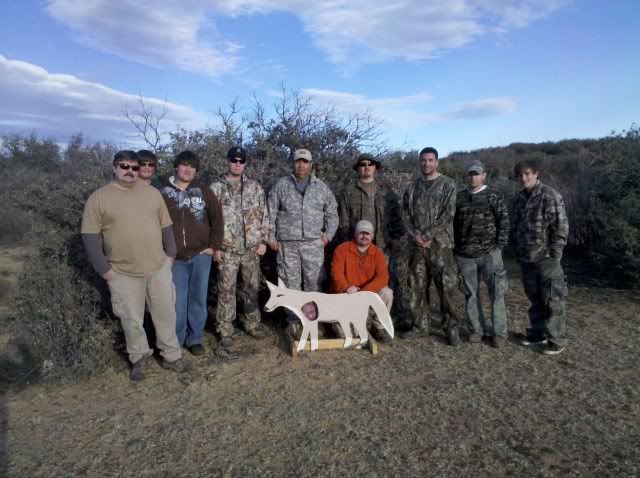I woke up to a pounding rain, but seeing as how I was heading south for a couple of hours I figured it might lighten up. I figured wrong, and when I met Daniel, the guy I would be hunting with, in the parking lot of a strip mall, he had a look of concern on his face. I re-assured him that all would be well, and we headed down the highway in the darkness and the ever increasing sounds of the rain.
About an hour after sunrise, the rain finally quit, and we bailed out of the truck and headed for our first stand. Our setup was prime, and we had the whole area of a small canyon covered. I really wanted to get some more animals in front of Daniel, as our last trip out produced plenty of animals but only a few that ended up in the truck. Not 2 minutes into my first sequence of gray fox distress and a gray fox shows up - but he's acting a little cautious, which is odd for a fox. He's coming in where Daniel can't see him, and no joke, ends up standing on the top of the rock which Daniel is leaned against. Finally the fox decides he doesn't want to come in for whatever reason, and starts to casually walk away. I waited until he was safely away from Daniel and I took the shot. It started raining again shortly after that, and if you look closely at this picture you can see some big raindrops on my rifle.
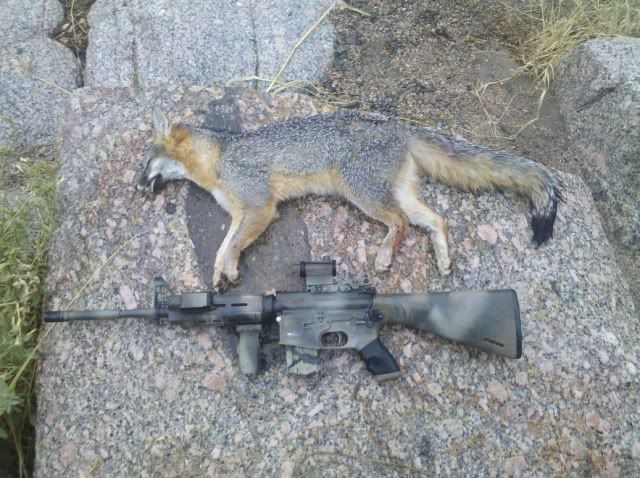
We hiked back to the truck in the rain (1/4 mile - hooray!) and spent the next hour in the truck. Off and on the rain allowed us to try a few more stands, but we only got to finish one of them as the rain kept chasing us back to the truck. I don't mind getting wet, but getting soaked isn't best time, and we spent most of the day soaked. Luckily Daniel is a good hunting partner and we kept the mood light. What else can you do when you're hiking up a canyon in the pouring rain? At some point on the way to a stand, I found this very unlucky horseshoe - I left it there:
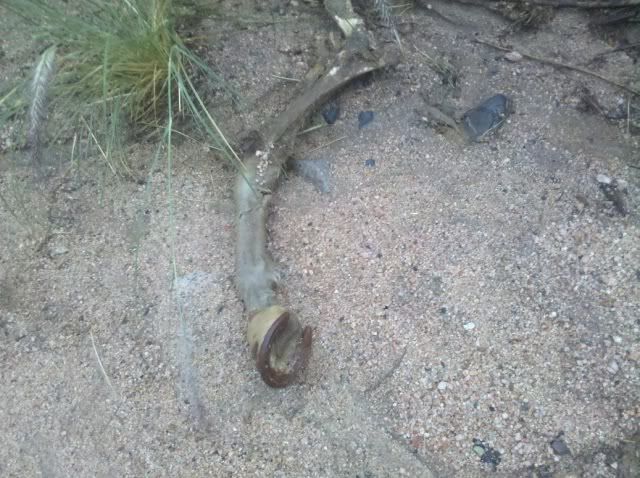
Around lunch we found an amazing canyon to call, and there was a lot of cat scat all over. It thundered and threatened us throughout the whole stand, but didn't do anything. Apparently the animals got the clue, but we didn't. Nothing showed on that stand, and as we debated hiking farther into the canyon we got hit with hail - lots and lots of pea-sized hail. We tried to take cover under a bush, but it wasn't doing much good. Finally we made a mad dash back to the truck, but still got drenched in the process. Here's us huddled under the bush, and that ground is supposed to be brown, but it's white with about 1/2 inch of hail:
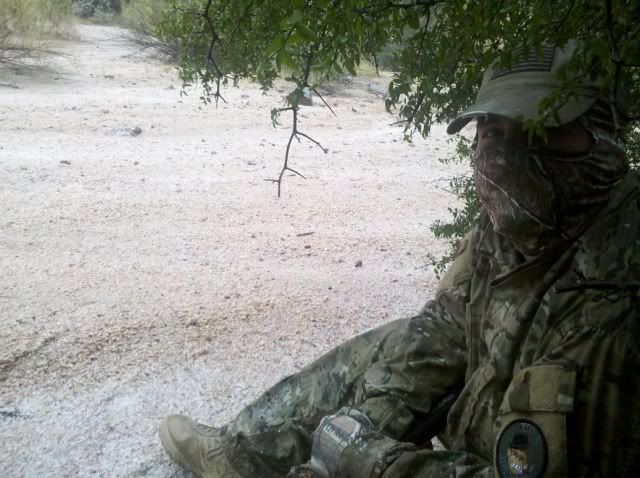
After more sitting in the truck and getting chased off of stands by weather, the sun finally broke through the clouds and we hit a great looking stand. Our setup was prime and less than 3 minutes into the stand I caught a bobcat sneaking in. I was using a Foxpro, and it was setup right in front of Daniel - this bobcat was stalking straight towards it and I was excited to watch Daniel out this cat in the dirt. As the cat continued to creep in closer and closer, Daniel still wasn't shooting, and I got nervous about the cat disappearing into some brush by the caller, so I went ahead and took the shot. Once the stand was over and I had a chance to look at it, it was actually a fairly small cat, or at least much smaller than the northern cats I am used to shooting. When I questioned Daniel about the cat, he said he got to watch the entire thing, but was worried about the cat seeing his movement if he raised his shotgun - the cat got to within 15 yards of him. Oh well, live and learn. Here's the bobcat (possible housecat):
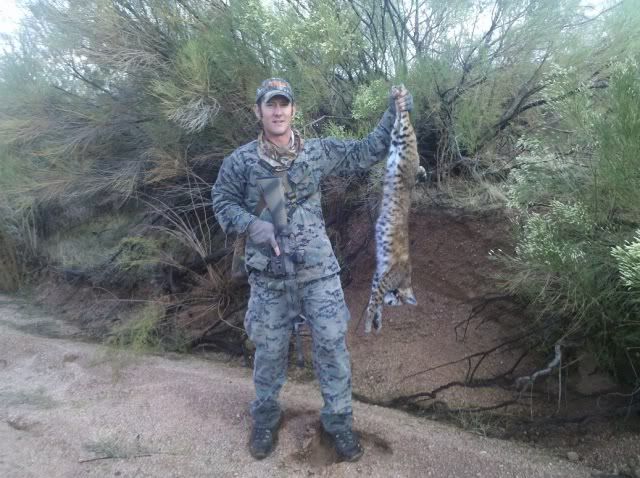
And wouldn't you know it - it started raining again after that! We were able to get a few more stands in before sundown, but between the rain and the threat of rain, I think the animals were just hunkered down. As the sunk sank low below the horizon, the rain finally broke again, this time for good, and we made one last desperate stand in the failing light. We ended up calling a blank, but one thing we certainly found that day was a good time. It was still a good day, and any day hunting beats the best day of working!

